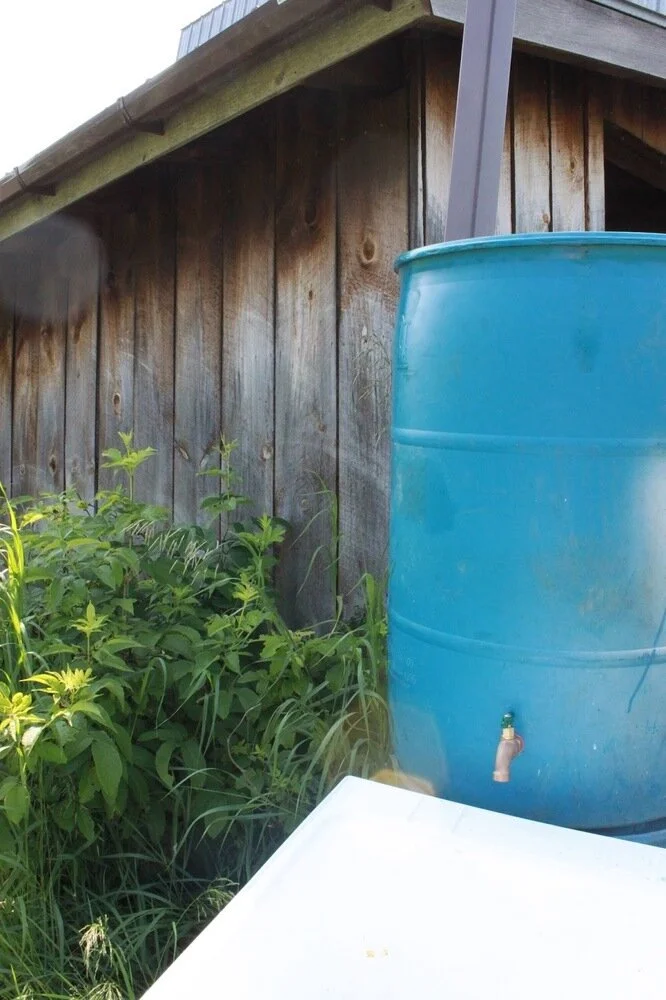Our Nature's Apprentice Puts Himself Between Mountain, Coal Corporation
/ |
| Matt Smith, at right, and friend in West Virginia. |
Release: Largest MTR mine shut down!
Editor's note: Better Farm's resident Matt Smith headed south to West Virginia last week in order to help shut down Patriot Coal's Hobet Mine in Lincoln County. The protests, designed as a call for the end to strip mining and a just transition for the region's families, resulted in 20 arrests. Patriot Coal's intent is to remove the top of a mountain in order to extract coal. The activists argue that this process causes irreversible damage to the environment, and potentially fatal health issues for people living nearby. Read more about mountaintop removal here.It was a dramatic scene Saturday, July 28, near the now abandoned community of Hagertown in a remote area of Lincoln County in southern West Virginia. Just after 1 p.m. a fifteen vehicle caravan pulled up at the entrance of Patriot Coal’s Hobet Mine No. 45. Fifty mountain defenders quickly exited the cars, taking by surprise the lone woman worker standing outside the guard shack at one of the largest mountain-top removal coal mining operations in Appalachia.
The nonviolent intervention action was coordinated by the grassroots organization R.A.M.P.S.—Radical Action for Mountain People’s Survival. Arrests ensued: Now, Matt and 19 others are being held in the Western Regional Jail after shutting down the largest mountaintop removal site in Appalachia. The bail was set at $25,000/person and can only be secured to property in West Virginia. The jail reported that Matt and the others are set to go before a judge tomorrow.
The Lincoln county Magistrate office is 304-824-7887.
Western Regional Jail phone number is 304-733-6821.
Below is the story.
Saturday, July 28th, 2012
posted by admin
FOR IMMEDIATE RELEASE
July 28, 2012
Contact: Charles Suggs, 304-449-NVDA (6832), media@wg.rampscampaign.org
Talking Points document: http://rampscampaign.org/key-messages-of-mountain-mobilization/
“The government has aided and abetted the coal industry in evading environmental and mine safety regulations. We are here today to demand that the government and coal industry end strip mining, repay their debt to Appalachia, and secure a just transition for this region,” Dustin Steele of Matewan, W.Va. said. Steele was one of the people locked to the rock truck.
Mounting scientific evidence shows that strip mining negatively impacts community health and miner health. Recent studies have found a 42 percent increase in risk of birth defects around strip mines, and miners who spend at least 20 years as strip-mine drillers have a 61 percent chance of contracting silicosis, a virulent form of black lung. “The coal companies are poisoning our water and air, and they’re treating the workers no better than the land – fighting workplace health and safety protections to get the most out of labor as they can,” said Junior Walk of Whitesville, W.Va.
As coal production declines, protesters are concerned that the region will be left with only illness and environmental devastation as the industry pulls out of the region and companies file for bankruptcy to shed legacy costs.
Patriot Coal is currently going through Chapter 11 bankruptcy, in which union contracts and pensions could be on the chopping block. Both UMWA pensions and the state’s Special Reclamation Fund are funded through a per-ton tax on coal. With Central Appalachian coal production in the middle of a projected six-year, 50 percent decline, this funding stream is increasingly unsustainable. Protesters are calling on the coal industry and government to ensure that funding is available both to honor commitments to retired workers and to restore the land.
“Coal companies must employ their surface mine workers in reclaiming all disturbed land to the highest standards. Instead of arguing about the ‘war on coal,’ political leaders should immediately allocate funds to retrain and re-employ laid off miners to secure a healthy future for the families of this region,” said R.A.M.P.S. spokesperson Mathew Louis-Rosenberg.
Appalachian communities, from union miners to the anti-strip mining activists of the 1960s, have a proud history of confronting the coal industry and demanding an end to its exploitive practices with direct civil disobedience. R.A.M.P.S. and other campaigns have returned to this tradition to eliminate strip mining once and for all. Since its founding in 2011, R.A.M.P.S. has organized a range of actions, from tree-sits to blockades of coal trucks.
Today’s protesters are among the hundreds of people across the country who are joining this summer’s National Uprising Against Extraction, using radical tactics to fight oppressive extractive industries and demand a transition to a sustainable economy.
All photos from Flickr.
To learn more:
"Mining protesters' $25K bail reasonable, magistrate says", the Charleston Gazette
"Escalating the Resistance in West Va. to Mountain top Removal Coal Mining", Action South
"Surface mining protesters still in jail, say bail amounts are unfair", WOWKTV.com









































































